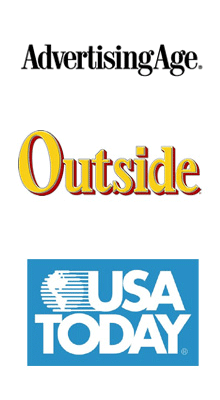Retailers will eventually recover from the consumption tailspin that threatens this holiday season. But quite apart from the recession, there are other, profound changes underway in the retail sector. As the evidence mounts about the power of social networks to reconfigure individual behavior, the crucial question facing industry is: How to leverage this phenomenon into actual profits?
The second generation of Internet (“Web 2.0”) companies such as MySpace, Facebook, Linked/In and YouTube exploded upon the scene three years ago. Today, MySpace and Facebook together have more users than the entire U.S. population; and the online community concept is already becoming a powerful tool for everything from creating customer loyalty, to assistance in product design, to a sounding board for company strategy. >>Full Story
Thoughts// A good opinion piece from the WSJ on the state of ecommerce, the economy and social networking. Let’s take a look at 4 of the 5 tools and practices set forth by the article. But first, a quotable line for your next board of director’s meeting, conference or happy hour:
There isn’t a smart company today that isn’t implementing some kind of online community, wiki or blog strategy.
Oh yeah, that’s the good stuff.
From loyalty to attention.
Before you can win consumer loyalty, you have to capture and reward consumer attention. Old propositions — network television’s tired offer of 22 minutes of canned sitcoms in exchange for eight minutes of untargeted commercials — won’t cut it. Consumers are demanding a better deal.
Some brands are starting to flirt with better exchange rates: Virgin Mobile gives a minute of free phone time for every minute of advertising a customer accepts. Ryan Air recently announced it would offer $15 coach tickets from the U.S. to Europe, subsidized by passenger attention to advertising and in-flight sales pitches.
Smart marketers will of necessity become obsessed with customer attention in the way they once obsessed over customer loyalty. The shrewd brands will create elaborate attention-rewards programs, and incentives to break through the noise and make that critical initial connection.
From crowds to clouds.
Once you get that attention — once you generate heavy traffic to your site, gather a large league of “friends” on MySpace, or spawn a dedicated following on Twitter — how do you monetize the crowd?
Smart brands are turning their crowds into “clouds”: organic, self-forming and often self-governing communities of interest. Companies such as Hewlett-Packard, Frito-Lay and Harley-Davidson use their clouds as feedback loops to get better faster by obtaining good, timely, often brutally honest customer insights. And the members of clouds can become true believers; they don’t just watch your commercials, they make them.
Right now, few companies are emotionally equipped to wring the best benefits of a cloud, because the most valuable voices out there usually belong to the malcontents. In the old model, customer-service departments aimed to placate or jettison disgruntled customers. In the cloud model, the idea is to cultivate and reward them. That’s not an easy transition.
From places to spaces.
Consumers are increasingly organizing themselves into new communities — not just the big generic social communities, but myriad idiosyncratic slices of narrow, passionate interest (i.e., BlackPlanet, Inpowr and MomsCafe).
These new market spaces, or “meganiches,” may seem small, even strange at first. But when they’re efficiently targeted, they can be highly responsive, lucrative and loyal. Well-established meganiche Web sites include Gamefaq.com for video gamers, Dpreview.com for digital photography aficionados, and Howardchui.com dedicated to mobile phone zealots.
With this shift toward self-organization by consumers, national advertising campaigns as we know them will increasingly become a waste of time and money for many companies. The trick for brands is to cohabit social spaces with these consumers. Social media, and its verb form, “friending,” requires entirely new forms of advertising: bottom up instead of top down, personal rather than public, and subtle rather than full frontal.
From memes to bemes.
In the Age of Broadcast, good advertising could occasionally manufacture memes of tremendous social impact. Think of “Where’s the Beef?” or “I can’t believe I ate the whole thing.” If you can’t recall an irresistible or effective turn of phrase of late, it’s because it is exceedingly difficult to spread a meme in today’s fragmented media environment. Marketing 3.0 is now the science of devising and managing directed business memes: call them bemes. Bemes are sent by members of social communities to each other and typically contain a reward or exclusive offer, which, when redeemed, also results in a reward coupon for the sender. This encourages members of social communities to propagate a “viral” ad. One well-documented beme was “The Subservient Chicken” from Burger King.
Brute force marketing won’t work inside social networks. The best online marketing now takes place among people who know and trust each other. Consider how rumors work. Like a rumor, a beme is a bit of useful information that rewards each person who passes it along. Want to be a sensation? Create a beme that consumers willingly accept and share with others.
While I like all of the points in the article, two really stand out in my mind:
Social media, and its verb form, “friending,” requires entirely new forms of advertising: bottom up instead of top down, personal rather than public, and subtle rather than full frontal.
An idea that I have been speaking about recently is that social media allows us to reemphasize 1-on-1 marketing, but on a larger scale. Especially within social media, the idea of personal marketing with subtle, but consistent messaging is more acceptable than so called ‘full frontal’ marketing. Simply re-posting an offline message or creative by using a shotgun approach…spreading your message online in numerous, untargeted locations…is not the ideal way to execute a social marketing campaign.
Like a rumor, a beme is a bit of useful information that rewards each person who passes it along. Want to be a sensation? Create a beme that consumers willingly accept and share with others.
Translation, content is king. Okay, perhaps that is a bit too simplistic. Creating valuable, useful content that consumers want to interact with is the ‘secret’ to social media. Consumers will and want to pass along good content…and will simply ignore bad content.











Random Thoughts: Transparency
We talk a lot on the Travel 2.0 blog about, well, blogs, twitter, social networking, etc., all with an obvious undertone of transparency. Participation is social media demands it. Being open and honest about who you are and why you are involved in any social network is what allows other people to understand your position and then determine if they want to communicate with you.
For many of us, and many of the people throughout all industries, transparency is a difficult concept to accept. Transparency means consumers know who you are. They know how to contact you. Heaven forbid you actually talk with one. It means a whole range of questions from the HR or Legal department. What you are talking about online. Perceptions. What about negative comments? What if someone disagrees with us? We have to maintain a brand image where everyone thinks we are perfect.
Ah, transparency.
A case study in the rapid adoption of transparency has been the online shoe retailer Zappos.com. They have a blog, including one for the CEO and COO, what seems like half of the company is on twitter, again, including the CEO and enjoy a tremendous reputation for their customer service because of transparency.
Earlier today, like so many organizations of late, Zappos.com had to lay off some of its workforce. Typically, the most hush-hush, quiet, don’t tell anyone process that any company goes through. Except they believe in transparency and more specifically: Build Open and Honest Relationships With Communication.
That means that the CEO is twittering about it and posting his internal email to employees on his blog. Plus, having a good percentage of your workforce on Twitter and advertising that fact, means that the general public could literally follow the firings in real-time.
And contrary to the incorrectly assumed thought in most people’s minds, the mood from those tweets was not angry or overly negative. Somber, sure and a few really negative comments here and there, but those were certainly not the majority.
Not to mention the praise from the public side on Zappos handling of the situation:
Will consumers continue to demand this type of transparency from all organizations they interact with? The trend is certainly headed in that direction, but what that means for each of us is still to be determined. Those who offer transparency will thrive and use it as a competitive advantage. Those who ignore it, or are not listening to the social communication, will only realize the damage being inflicted to their brand after it is too late.
The true worry for brands in terms of social media should not be negative comments, but rather no comments at all.
5 Comments
Filed under Case Study, Digital Branding, Random Thoughts, Social Content, Social Networking, Trends, Twitter, UGC
Tagged as Blog, Blogging, Negative Comments, social media, Twitter, UGC, Zappos.com